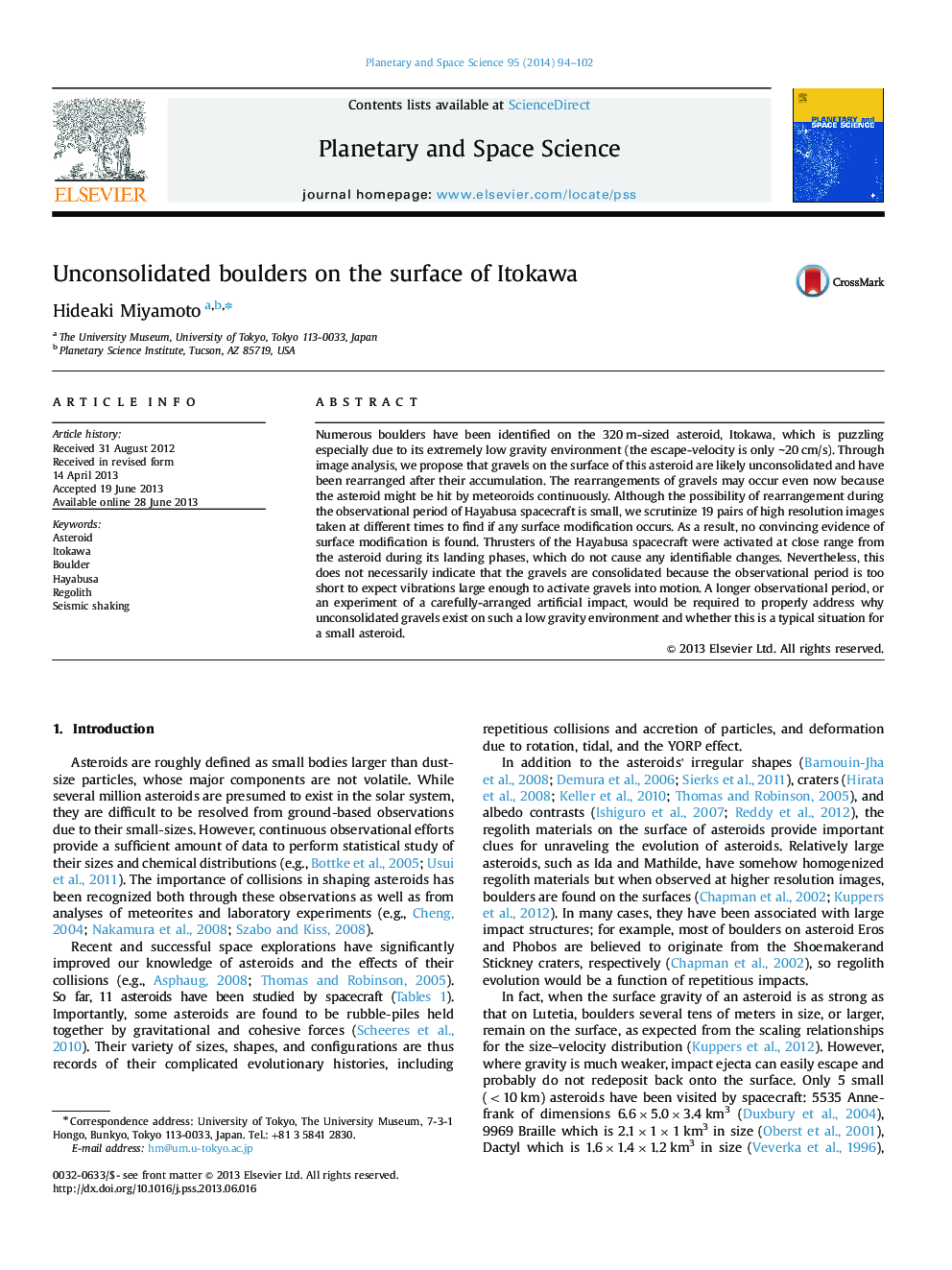| کد مقاله | کد نشریه | سال انتشار | مقاله انگلیسی | نسخه تمام متن |
|---|---|---|---|---|
| 1781139 | 1523942 | 2014 | 9 صفحه PDF | دانلود رایگان |
• Itokawa holds numerous boulders with its small self-gravity.
• Series of geological evidences indicate that boulders are unconsolidated.
• Boulders may be rearranged even now due to small impacts.
• No changes on the surface can be observed during the Hayabusa mission.
Numerous boulders have been identified on the 320 m-sized asteroid, Itokawa, which is puzzling especially due to its extremely low gravity environment (the escape-velocity is only ∼20 cm/s). Through image analysis, we propose that gravels on the surface of this asteroid are likely unconsolidated and have been rearranged after their accumulation. The rearrangements of gravels may occur even now because the asteroid might be hit by meteoroids continuously. Although the possibility of rearrangement during the observational period of Hayabusa spacecraft is small, we scrutinize 19 pairs of high resolution images taken at different times to find if any surface modification occurs. As a result, no convincing evidence of surface modification is found. Thrusters of the Hayabusa spacecraft were activated at close range from the asteroid during its landing phases, which do not cause any identifiable changes. Nevertheless, this does not necessarily indicate that the gravels are consolidated because the observational period is too short to expect vibrations large enough to activate gravels into motion. A longer observational period, or an experiment of a carefully-arranged artificial impact, would be required to properly address why unconsolidated gravels exist on such a low gravity environment and whether this is a typical situation for a small asteroid.
Journal: Planetary and Space Science - Volume 95, May 2014, Pages 94–102
